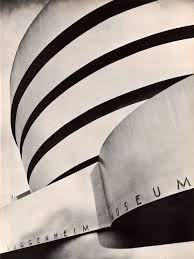Oct 6 2017 - Jan 7 2018
New York City, NY
Art and China after 1989: Theater of the World is a major exhibition of contemporary art from China spanning 1989 to 2008, arguably the most transformative period of modern Chinese and recent world history. The largest show of this subject ever mounted in North America, it offers an interpretative survey of Chinese experimental art framed by the geopolitical dynamics attending the end of the Cold War, the spread of globalization, and the rise of China. The arc of this international history, beginning with the crushed utopianism of the nationwide democracy movement and culminating in the conflicted euphoria surrounding the Beijing Olympics, provides the framework for the Guggenheim’s show. Theater of the World examines how Chinese artists have been both agents and skeptics of China’s arrival as a global presence, and seeks to reposition a Sinocentric art history in a way that sees China as integral to the emergence of the global contemporary.
The exhibition title comes from a major installation in the show by Huang Yong Ping. Inside a caged arena shaped like a mythological tortoise, hundreds of live reptiles and insects devour each other over the course of the show. Teeming with life and littered with carcasses, this gritty scene brings the viewer into an immediate encounter with the violent yet matter-of-fact play of powerful forces over weaker ones. Huang’s visual brutality foreshadows an underlying sense of visceral realism and realpolitik that is present in much of the most interesting work of this period.
Opening at the Solomon R. Guggenheim Museum in October 2017, the exhibition is divided into six chronological and thematic sections installed in the rotunda and two tower galleries. Theater of the World includes contributions by more than 70 artists and collectives, and features some 150 iconic and lesser-known works on loan from private and public collections around the world. These works employ a vast range of experimental mediums, including film and video, ink, installation, Land art, performance, as well as painting and photography. The show also presents documentary footage of important avant-garde exhibitions together with other archival materials highlighting key moments and movements in this contested history.
Credit: Exhibition overview from museum website.
Image: Liu Wei, Two Drunk Painters, 1990; oil on canvas, 59 in. x 39 1/2 in. (149.86 cm x 100.33 cm); Collection SFMOMA, Gift of Vicki and Kent Logan; © Liu Wei

Select Art and China after 1989: Theater of the World to learn more, or to place this book in your Amazon shopping cart. Your Amazon purchase through this link generates a small commission that will help to fund the ArtGeek.art search engine.

